Decorating with joy and heritage
Designing my home in a way which celebrates my Black identity AND makes me smile
I had two definite, non negotiable missions when it came to decorating my London home when we moved in 2020 ( just 5 days before lockdown!). The first was that the home was to feel as happy and joyful as possible. Cottage Noir, as I soon nicknamed the 1750s built Grade 2 listed cottage, was destined to be the formative, core memory-maker, childhood home for my two young daughters and I wanted it to be the ultimate happy and safe space for them as they navigated growing up in the UK as little Black girls.
The second mission, equally non negotiable, was that the home would be the ultimate blank canvas where I could explore and celebrate my dual African and Caribbean heritage across as many surfaces as possible - walls, floors, kitchen splash backs, bathroom tiles, nothing was safe as everything was given an African style glow-up! I wanted the home to be totally and unapologetically a celebration of everything I loved about my heritage.
Cottage Noir, a quaint 1750s English bakers’s cottage re-imagined to become an unapologetically Black and joyful home
Now, almost five years on, I feel satisfied that I have gained a **mission complete** badge in completing my twin missions, not because of any external validation which I may have received (as wonderful as it all is!) but because me and my family are living happily within it.
The image below of my staircase sums it up: there is a wallpaper designed by Haitian designer Yael et Valerie which brings me infinite joy, plus the “Naughty Step” board which always makes guests laugh and question if it was ever used (yes it was!) and finally and most importantly, my two happy girls, relaxed and affirmed in their home space.
Designing a home with joy and culture as the main themes was certainly one of the most rewarding journeys I have been on, bolstered by the ever supportive community I have found on instagram. One challenge however was the dearth of inspiration in interior design books and magazines. For joyful home inspiration, this was difficult as everything tasteful and luxurious seemed to equate not with joy but with minimalism , seriousness and the dreaded griege colour ( a combination of grey and beige). The lode star of many contemporary architects and designers is the architect Le Corbusier who famously stated that he designs homes as “ a machine for living” . I think this philosophy directly trickles down to the dismissal of joy and frivolity in so many contemporary design schemes.
Even more so was there was a lack of information on decorating with African or Caribbean culture. It was a choice of “Safari chic”, some “ethnic” or “tribal” overload and nothing much else. However I managed to gain inspiration from delving deep down into the corners of Instagram, Pinterest, original research material, eBay, auction houses and Etsy. Plus items I collected in my travels over the years.
However things are changing I am so happy to say and two books recently published directly address and speak to both these missions.
The first book Home Matters by Penelope Wincer features photography of my very own Cottage Noir in a discussion of the joyful home.
Cottage Noir photographed by Penny Wincer in Home Matters.
Wincer reinforces the importance of joy, and the possibilities of creating it. Far from being frivolous or unimportant Wincer talks about “the surprising power of ordinary things to create extraordinary happiness”. Where better I think, to harness that power than in our homes. Each time I go up my staircase and am greeted with that bright yellow wallpaper with pictures of powerful black women, it is just so lovely and self affirming. Every time my husband enters his office he has to push past a secret hidden door decorated by a photorealistic mural of hardcover books. Yes our home is unapologetically joyful, and in ways that are often inexpensive and simple to curate. The real effort is just to push past the normal and mainstream and to be unafraid to give space to what truly makes you smile.
The secret door to Papa Noir’s office, could you guess?!
The second mission, to decorate with culture was also challenging to pull off, with even less inspiration available from magazines and interiors books. Furthermore when I thought of culture I knew more clearly what I didn’t want than what I did. I didn’t want those pictures of market women selling their wares, or wall carvings of elephants and giraffes. Or Dutch wax cushions everywhere. Actually let me finesse that, I actually do have a sprinkling of each of these kind of objects around the house! Because some are indeed lovely and they are a part of our story however, they are not the single story! I wanted to actively seek objects which told stories of modern, urban black families, like we are.. I wanted watercolours of Black violinists, and sculptures that look like modern Black women, and contemporary British Caribbean art, all this to work alongside the traditional artisanal items that I collected that are just so special, unique and luxurious.
Celebrating the timelessness of African heritage objects. Photograph by Gavin Chetty
I wish I had The African Decor Edit by Nasozi Kakembo to guide me at the time. This recently released book provides essential advice and inspiration on how to collect and decorate with heritage objects. The first part of the book deep dives into a selection of iconic African heritage objects such as Bolga Baskets from Ghana and Juju Hats from Cameroon. Nasozi talks about the meanings behind the objects and profiles the creators behind them. I loved this inclusion of the pictures and names of artisans in the book. How many times have we seen African baskets and carvings in interior schemes but never a profile of the creators, such as the beautiful Catherine Lontse who has been making Juju Hats for the past ten years. Nasozi also highlights the importance of these artisanal cottage industries to economically support the community and the country as a whole. The second part of the book looks at a selection of homes across the world that decorate beautifully with African heritage objects, including Nasozi’s own home in the United States.
Nasozi’s home in African Decor Edit
I am having an “in conversation”with Nasozi on the 4th December at her London book launch. Details are below. Do come if you can, rsvp at xnstudio.com if you can make it.
Although I have awarded myself the mission complete badge on my home, I do not want to stop the journey and I continue to collect and curate African heritage objects that bring me joy. However the mission now is one-in-one-out as I delicately tread the line between more-is-more and way-too-much! My latest purchase, from a Liverpool auction house is this wonderfully carved trunk, which I think is made by Edo artisans in Benin, Nigeria which I have started to polish and restore - isn’t she a beaut!
A recent auction purchase, an intricately carved wooden trunk, telling a story of a King (Oba) and his numerous attendants
Researching the book I am currently writing on The Black Home I discovered that decorating with joy and culture are integral parts of our Black identity. Looking at the creativity of the Soninke women, pictured below, decorating the exterior of their homes with expertly chosen jewelbox colours, it is clear that joy is at the forefront of their creative process. Even more powerfully, when one considersthe heritage object - be it baskets, stools or juju hats these were an integral part of daily life, having utilitarian uses rather than used simply for decoration. It was that the traditional African love of adornment and symbolism elevated these objects to something so much more elevated than simply living machines and led to our desire to have these objects in our homes now.
Soninke women decorating their homes, photographed by Margaret Courtney Clarke
This image of the Soninke women seem an appropriate place to end this post, as it makes it so clear to me that all my endeavours at Cottage Noir are simply an attempt to keep up with my ancestors in making my home joyful and centred on the craftsmanship in my heritage. There more I consider it I realise I have been on a journey not of interior design but of decolonisation of the home space all along!
I really hope you have enjoyed this post. Please do like comment and share, I love a bit of feedback!
And if you are not a subscriber, please do sign up here and support my work

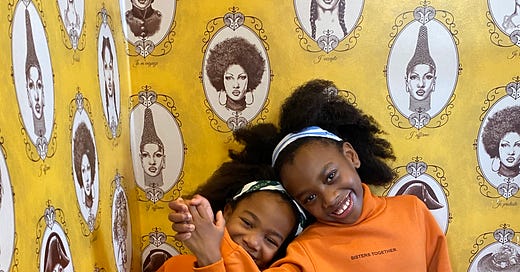


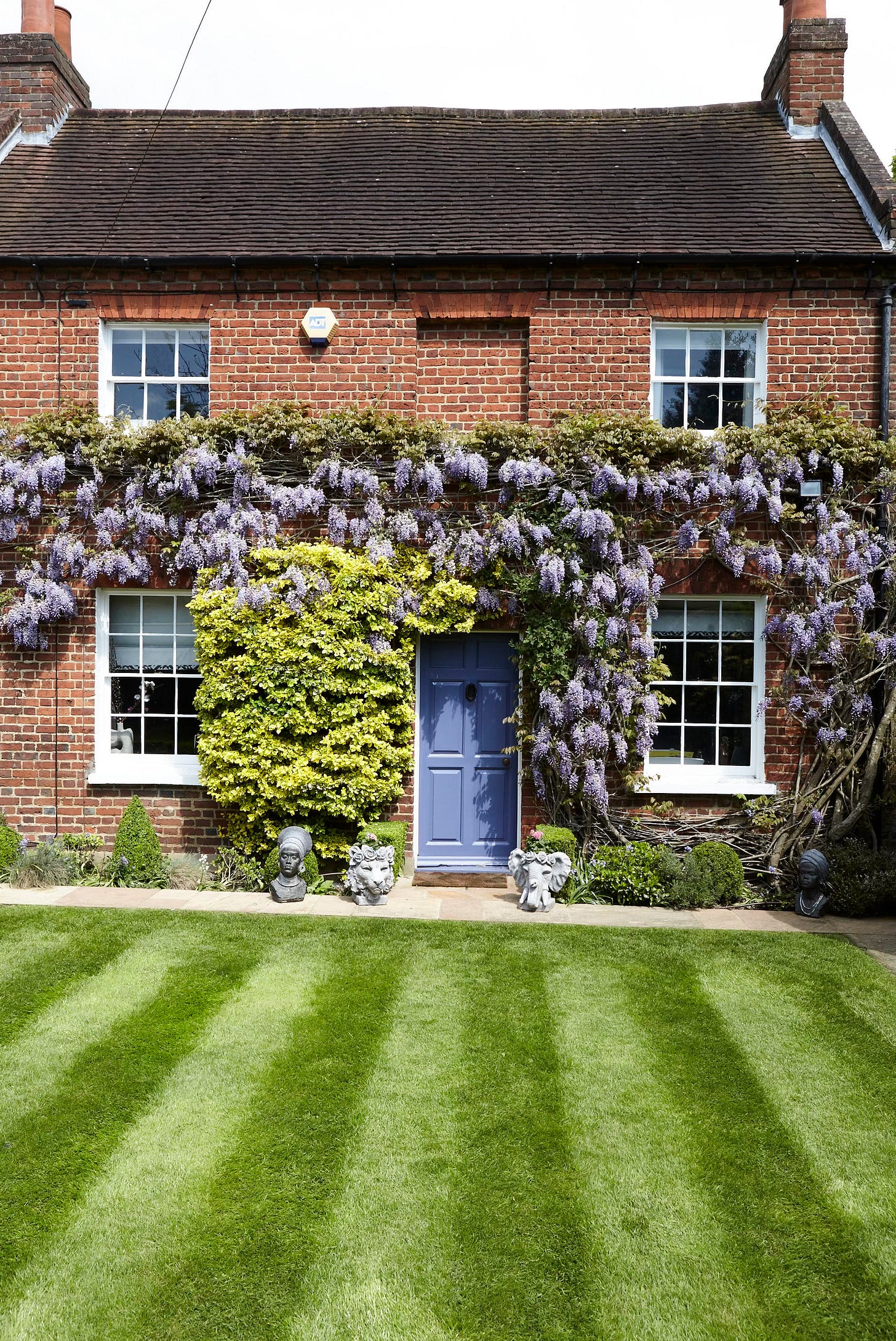

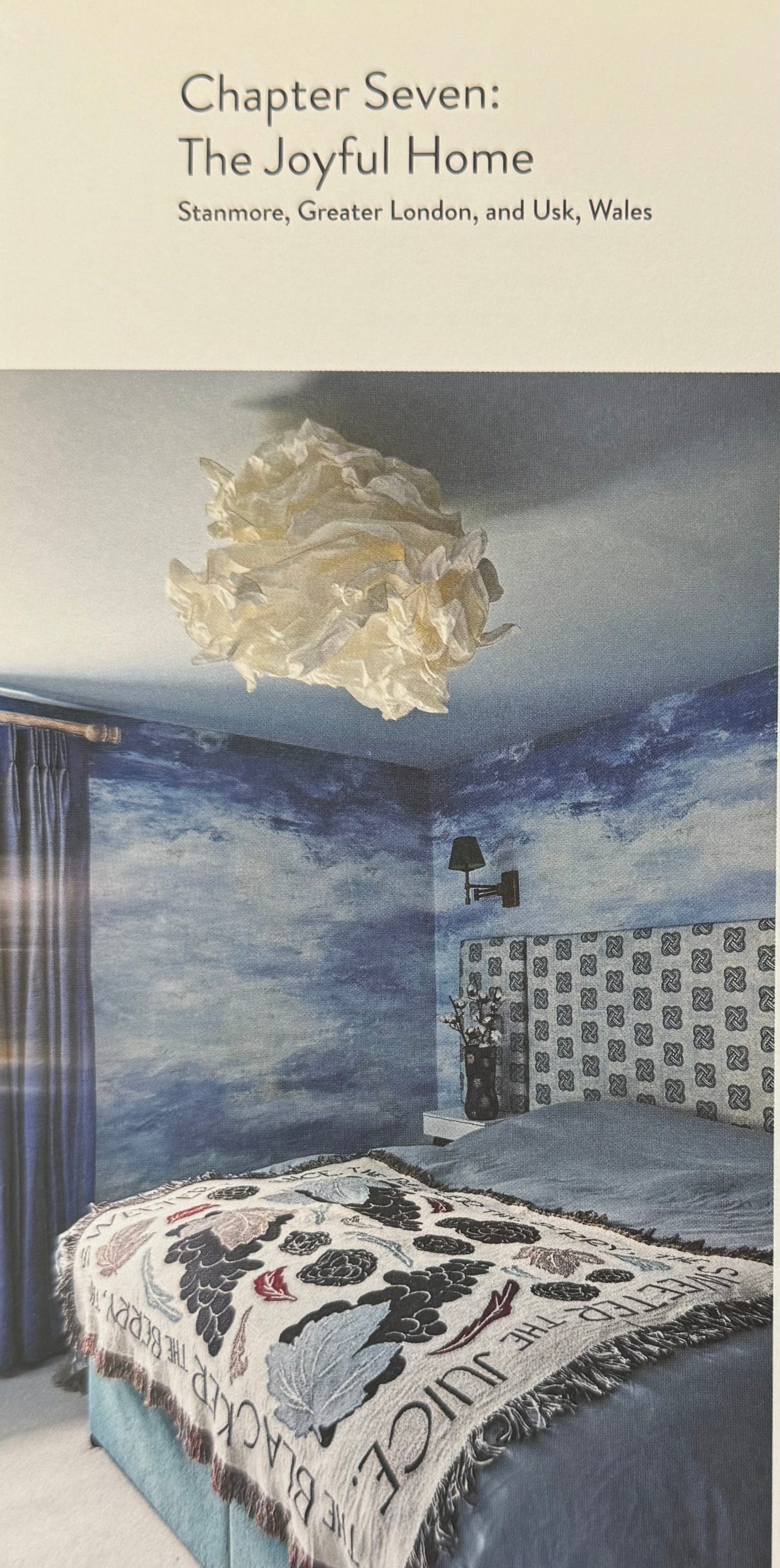
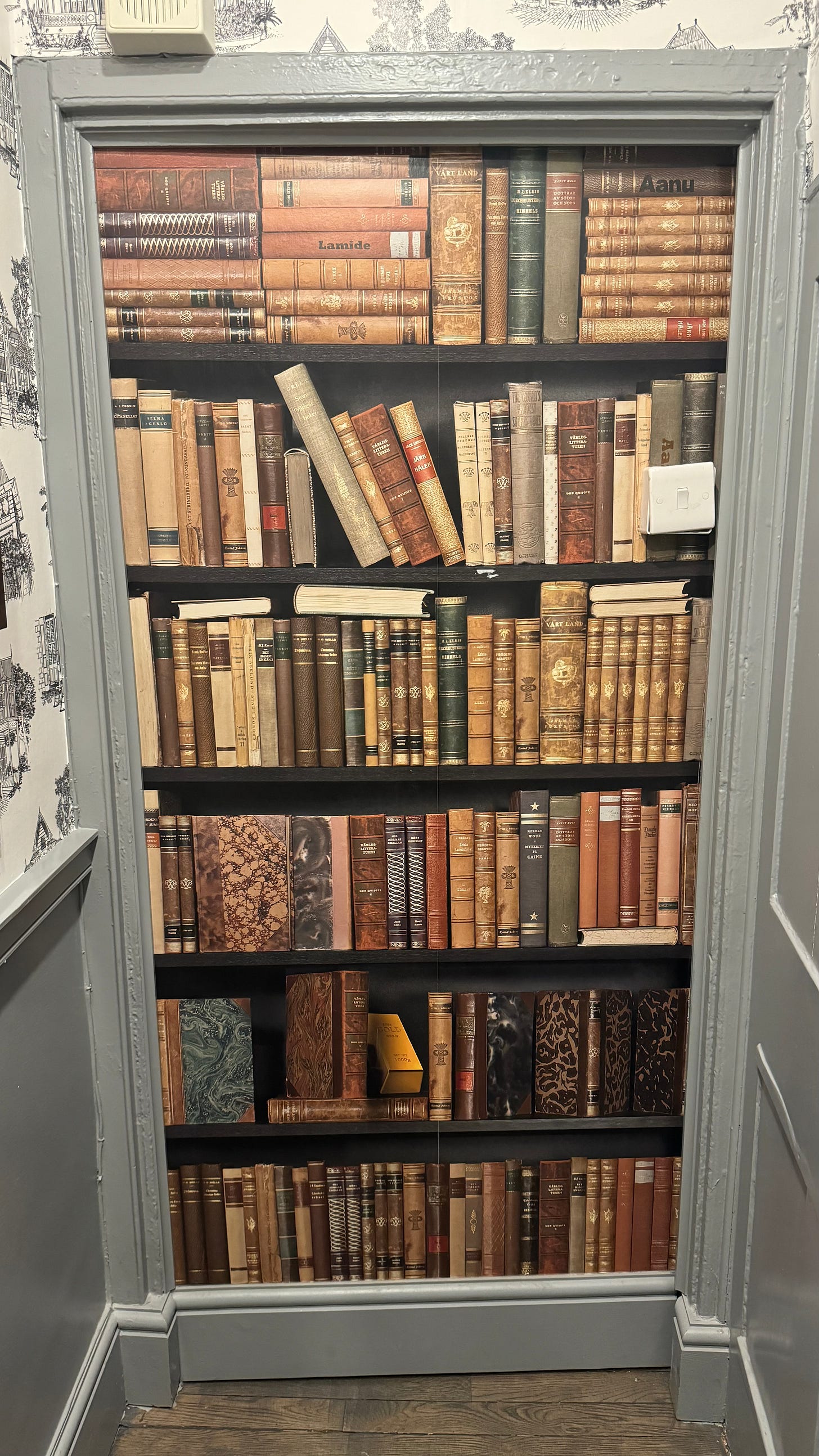
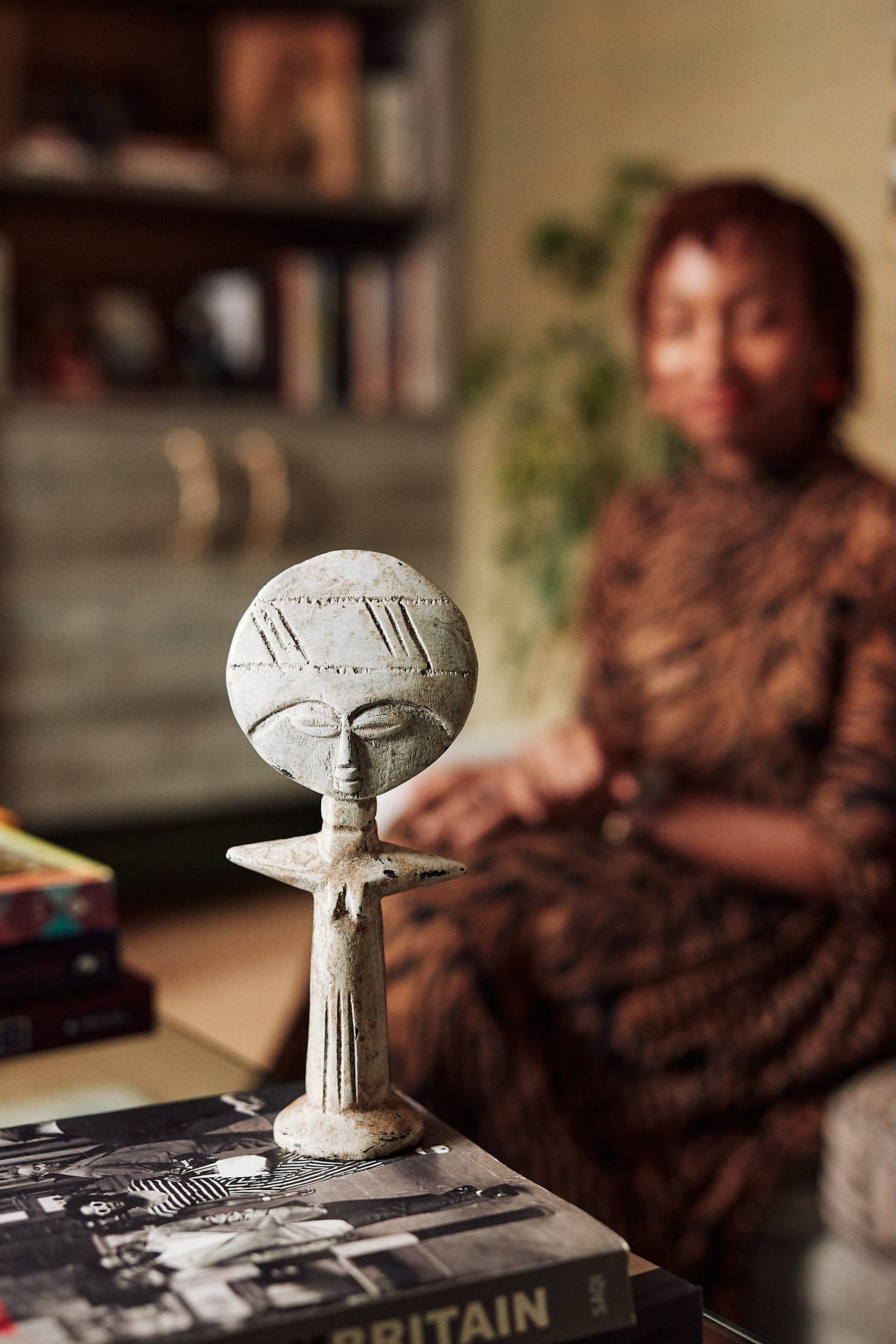
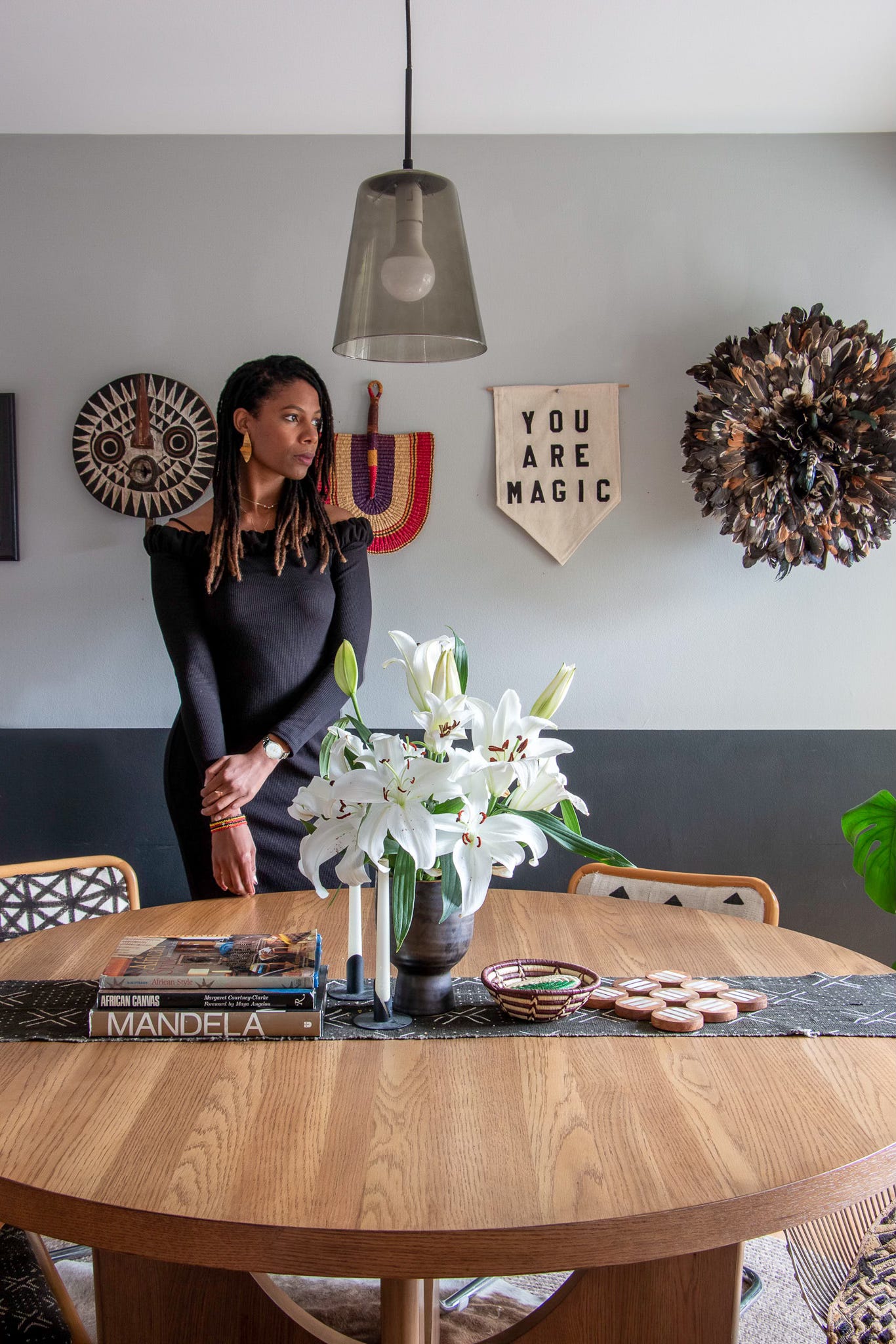
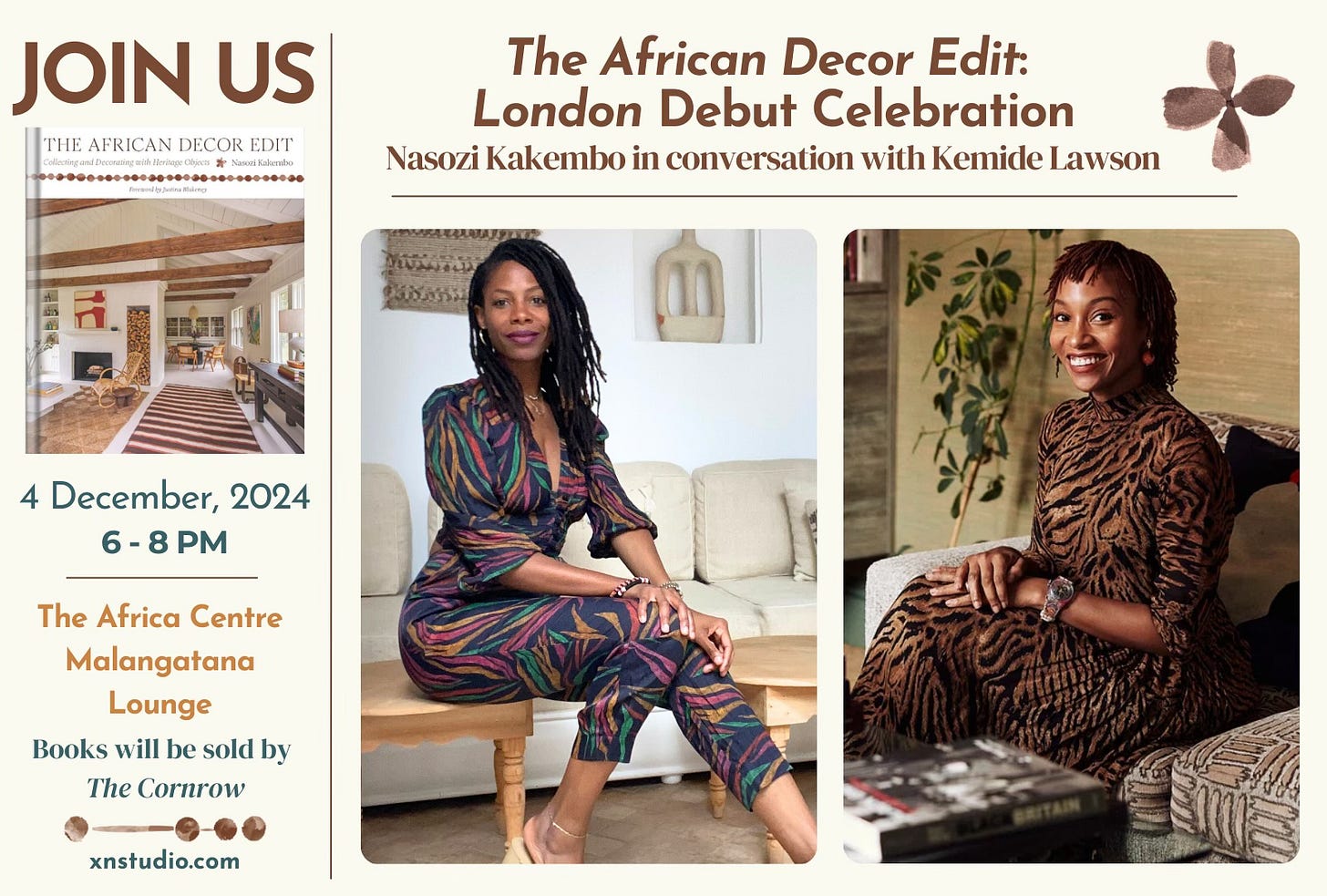
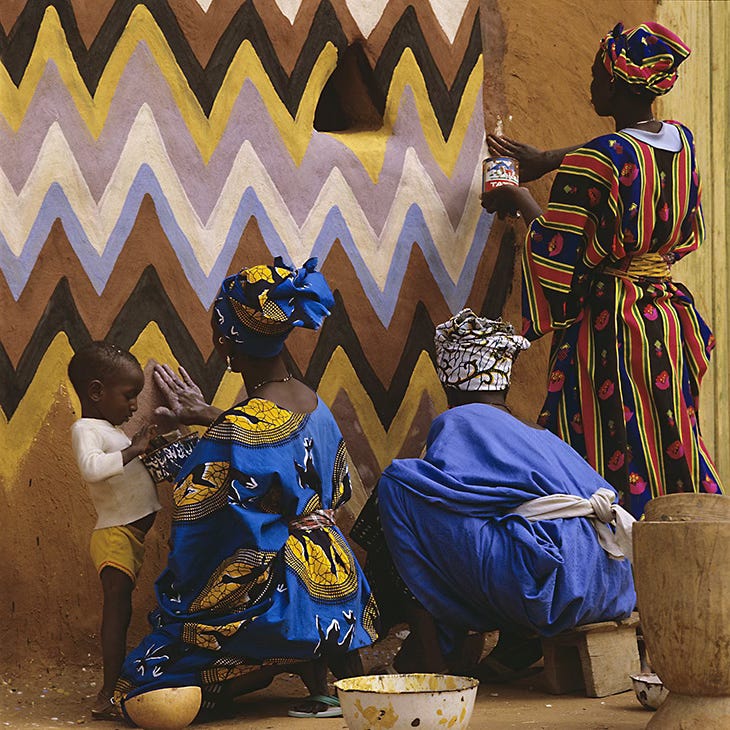
Thank you so much for your comment! Yes it is incredible how impactful our childhood home is, whether we realise it or not!
I love the wallpaper. Your home is beautiful.